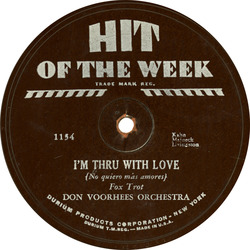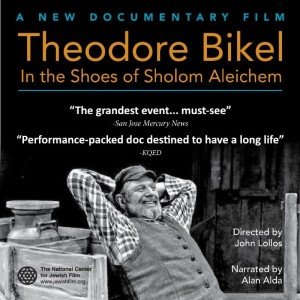Passover is all about retelling the story. And what better way to celebrate than to enjoy this modern day interpretation of an old story.
Our Passover gift to you! This Passover-themed parody of Uptown Funk by Six13. It is so catchy, it just might get stuck in your head all through Passover, which begins the evening of April 3 and ends the evening of April 11. Read More About This…

Introduced in 1930 and discontinued in 1932, these records were made from a flexible synthetic resin (Durium) coated on brown paper.
What are sound recordings made of?
Initially sound was recorded on wax cylinders. By the end of the 1920s, however, recordings were made of a heavy, fragile shellac compound.
Producers began looking for better options and started experimenting with materials that were lighter, flexible and less fragile. Read More About This…
 Portraits of two beloved icons–Sholom Aleichem and Theodore Bikel–are woven together in this enchanting new documentary. The two men have much in common: wit, wisdom and talent, all shot through with deep humanity and Yiddishkeit.
Portraits of two beloved icons–Sholom Aleichem and Theodore Bikel–are woven together in this enchanting new documentary. The two men have much in common: wit, wisdom and talent, all shot through with deep humanity and Yiddishkeit.
Theodore Bikel, the unstoppable performer whose career spans more than 150 screen roles (including an Oscar-nominated turn in “The Defiant Ones”) and countless stage and musical productions, is also the foremost interpreter of Sholom Aleichem’s work. Now 90, Bikel has played Tevye the Milkman on stage more than 2,000 times, and he has animated Aleichem’s work through his creation of two celebrated musical plays about the great Russian author. Read More About This…

Did you know Star Trek’s Mr. Spock was Jewish?
Leonard Nimoy passed away February 27, 2015 in Los Angeles at the age of 83.
The son of Yiddish speaking Orthodox Jewish immigrants from Iziaslav, Soviet Union, Nimoy began acting at the age of 8. Read More About This…



